Background
1973 was a great year! The Vietnam War ended, construction on the Sears Tower in Chicago was completed and the Federal Express was launched. But in midtown Manhattan, there was something even more amazing taking place.

Martin Cooper, a Motorola employee, stood on 6th Avenue, between 53rd and 54th streets and made the first cell phone call from a handheld subscriber device. Who did he make this first inaugural cell phone call to? His mother to tell her “happy birthday”? His wife to tell her that he’d be working late and not to wait up? No way! His first cell phone call was to his rival at Bell Labs to ask him how his reception sounded. As an electronics engineer, I can appreciate that sense of competition!
I remember many years later in the early 90’s that my parents brought home our family’s first cell phone. It was a Motorola bag cell phone like this one. My dad was a traveling salesman at the time, and this phone gave us a way to get in touch with him while he was on the road.. IF he happened to be in an area with service. And THAT’S where I first noticed the major flaw in the cell phone system. Cell phones are worthless without the service to power them. If only there were a way to extend cell phone signal in areas that have poor coverage. Enter, cell phone signal boosters!
What do cell phone signal boosters do?
Cellular signal boosters (or range extenders, as they are sometimes called) will always have an input antenna (referred to as the outside antenna) and an output antenna (referred to as the inside antenna). The outside signal is collected, filtered, amplified and then rebroadcast to users via the inside antenna.
SureCall created this amazing graphic that very effectively illustrates the basic functionality of cell phone signal boosters.
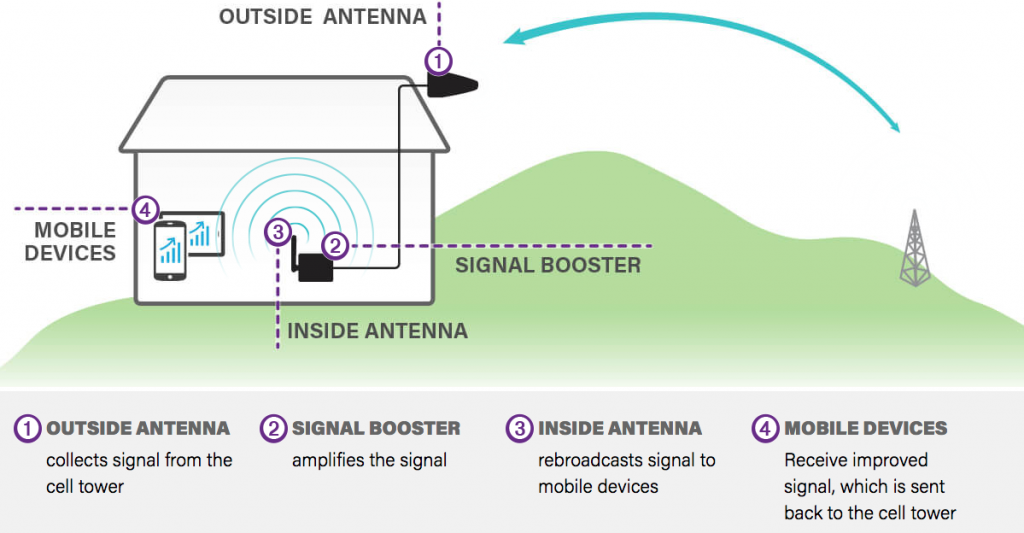
This same basic principle is applicable to all different types of cellular signal boosters (home, office, enterprise and vehicle boosters).
While this blog post will not get into the “nitty gritty” of how you do the actual install of a cell phone signal booster (see this blog post on installing cellular signal boosters for more in-depth installation tips), we will briefly discuss the basics.
Outside Antenna
The functionality (or coverage area) of a cellular signal booster DIRECTLY relates to the quality of the cellular signal received by the outside antenna. A cell phone signal cannot create a signal where none exists. But it CAN help to increase signal where it is poor.
The type of outside antenna and its orientation is crucial to maximize the effectivity of the cellular signal booster. Antennas come in two flavors, directional and omni directional (non directional), depending on your particular situation, you may need to choose one over the other.
For example, if you have great service outside your home, but terrible service inside your home, you will probably want an non-directional outside antenna. If you were to choose a directional antenna and aim it at the cell phone tower, the signal from the cell tower would overpower the booster. This would limit the effectiveness of the booster. On the other hand, if there’s a poor outside signal, using a directional antenna would give much better results inside.
Inside Antenna
Because inside antennas also come in the directional and non-directional varieties, you may need to carefully consider your choice of inside antenna. If you are going to install the booster near an outside wall, you might go with a directional antenna. Then you could aim the inside signal towards the interior of the building. On the other hand, if you are going to install the booster near the center of the building, you might want to use a non-directional antenna instead.
The Booster
There are quite a few different options for cell phone signal boosters. The main difference in booster models is the amount of gain and output power that a booster is capable of providing. Surecall has a few “flagship” models that come highly recommended (by me… because I have personally tested them).
The following are my favorite booster kits for the respective categories:
Need Help?
If you need help figuring out what might be best for your exact situation, we are more than happy to help! Since we understand that not everyone can be an electronics engineer (like me), email us at: [email protected] describe your situation, and we would LOVE to help you design your cellular signal booster system!
When you’re ready to buy your cell phone signal booster, we would LOVE to sell you what you need! Buy cell phone signal booster here in my shop.


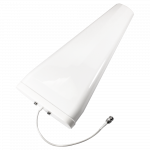
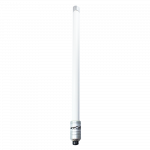

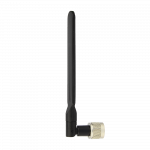
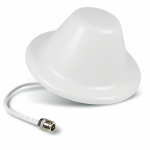

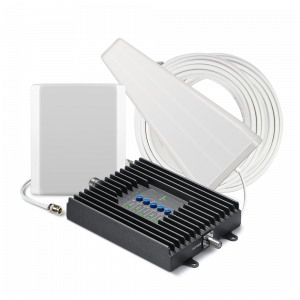
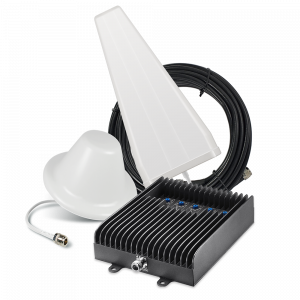
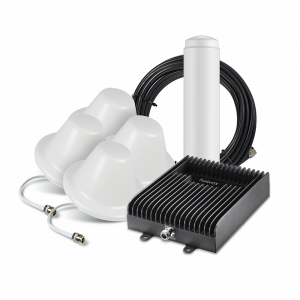
Martin Cooper
Informative article! And thanks for the endorsement.
Marty Cooper